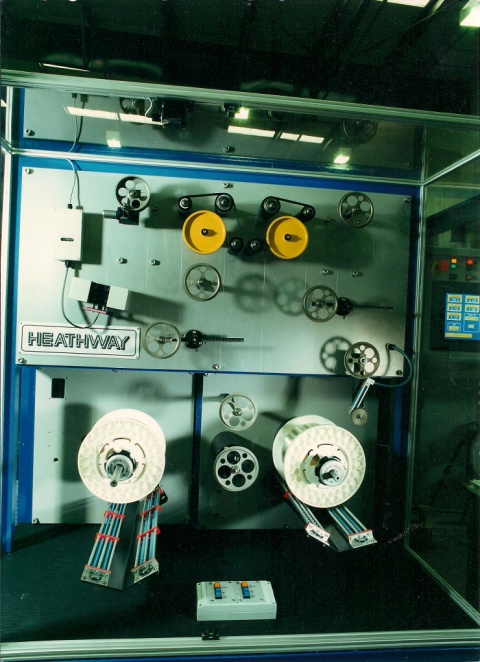Why robotic vision enhances production consistency in manufacturing
Wiki Article
All You Required to Learn About Robotic Vision and Its Applications in Advanced Optical Dimension Solutions
Robotic vision stands for a substantial advancement in the crossway of computer system vision, expert system, and artificial intelligence. This modern technology enhances the accuracy of optical measurement systems, making it possible for real-time information evaluation and boosted quality assurance. Its influence spans numerous fields, from making to healthcare. However, the evolving landscape of robotic vision questions regarding future abilities and applications (robotic vision). What innovations lie in advance in this transformative area?Understanding Robotic Vision: Secret Concepts and Technologies
Robotic vision encompasses the modern technologies and techniques that enable devices to translate and recognize visual information from their setting. This area combines aspects of computer vision, expert system, and artificial intelligence to assist in automated decision-making based upon visual information. Trick principles include picture processing, which involves the improvement and analysis of images to remove significant functions, and object recognition, which allows devices to determine and identify items within a scene.
The Integration of Robotic Vision With Optical Measurement Equipments
As sectors increasingly demand accuracy and performance, the integration of robotic vision with optical measurement systems has actually become a transformative method. This harmony permits robotics to perceive and interpret their environments, improving the ability of optical dimension systems to evaluate and examine things with unparalleled accuracy. By furnishing optical sensing units with sophisticated imaging technologies, robotic vision makes it possible for real-time data collection and processing, helping with prompt adjustments to measurement parameters.The mix encourages automated systems to detect variations in measurements, surface area top quality, and alignment, which are vital in high quality control processes. Enhanced algorithms, such as machine learning, additional enhance this combination by improving the systems' ability to adjust to various atmospheres and situations. Subsequently, the assimilation not only enhances dimension processes but additionally decreases errors, making certain that items satisfy stringent sector criteria, consequently strengthening the duty of robotic vision in the future of optical measurement systems.
Applications of Robotic Vision in Manufacturing
In contemporary manufacturing atmospheres, making use of vision systems has actually transformed manufacturing processes by making it possible for machines to execute tasks with impressive precision and rate. Robotic vision systems are increasingly used for top quality control, where they examine products for issues and guarantee adherence to requirements. These systems utilize cameras and progressed algorithms to analyze items in real-time, substantially reducing the danger of human error.In addition, robotic vision promotes automation in assembly lines, enabling robotics to accurately determine parts and assemble them with very little downtime. This technology likewise boosts inventory monitoring, as vision systems can keep track of supply levels and find disparities, guaranteeing a seamless supply chain.
In addition, robot vision help in the implementation of wise manufacturing facilities, where information from vision systems can be incorporated with other technologies to maximize workflows. Overall, the applications of robotic vision in manufacturing demonstrate its vital role in enhancing effectiveness, high quality, and efficiency across different industries
Robotic Vision in Medical Care: Revolutionizing Client Care

In recovery, robot vision help in keeping track of patient development and customizing therapy sessions to specific needs. It sustains doctor by automating tasks such as information collection and person surveillance, enabling more time to concentrate on direct patient interaction. Furthermore, robot vision enhances telemedicine by allowing remote medical diagnosis and digital examinations, bridging the space in between people and doctor. In general, the application of robot vision in healthcare is changing client treatment, leading to boosted results, performance, and client contentment.
Future Trends and Growths in Robotic Vision Innovation
The quick advancement of robotic vision innovation promises to further improve its applications throughout various fields, including medical care. Future fads show a considerable shift in the direction of integrating fabricated knowledge and device learning, making it possible for systems to gain from large datasets and enhance precision with time. Boosted sensing unit technologies and deep discovering algorithms are anticipated to refine item acknowledgment capacities, allowing robotics to analyze complicated atmospheres more properly.
In addition, the assimilation of augmented truth (AR) with robotic vision will likely change exactly how robotics assist in operations and diagnostics. This harmony will help with real-time information visualization, enhancing decision-making processes. In addition, miniaturization of elements will certainly result in even more compact and flexible robotic vision systems suitable for a variety of jobs. As these innovations unravel, markets will witness boosted automation and efficiency, strengthening robot vision as a foundation of innovative technological solutions.
Often Asked Questions
What Are the Main Elements of a Robot Vision System?
The main elements of a robotic vision system include cams for photo capture, cpus for information evaluation, formulas for interpretation, and actuators for motion. With each other, these elements enable robotics to perceive and connect with their environment efficiently.How Does Robotic Vision Improve Accuracy in Measurements?
Robotic vision improves dimension precision by using sophisticated imaging innovations, enabling accurate things detection and spatial evaluation. This ability decreases human error, enhances repeatability, and enables real-time modifications, ultimately enhancing overall measurement reliability and effectiveness.What Industries Benefit Many From Robotic Vision Innovation?
Numerous industries profit substantially from robotic vision innovation, consisting of manufacturing, healthcare, farming, and logistics. These sectors make use of boosted precision, performance, and automation, resulting in improved productivity and decreased functional prices in their respective processes.Can Robotic Vision Solutions Operate In Low-Light Conditions?
Robotic vision systems can without a doubt operate in low-light problems, making use of robotic vision sophisticated sensing units and formulas to improve image quality. This ability allows them to perform efficiently in different settings, including commercial and monitoring applications, despite very little illumination.What Are the Prices Related To Carrying Out Robotic Vision?
The prices related to carrying out robotic vision differ considerably, affected by components such as video cameras, software program, and integration. Additional expenses include maintenance, training personnel, and prospective upgrades to existing systems, which can gather gradually.Report this wiki page